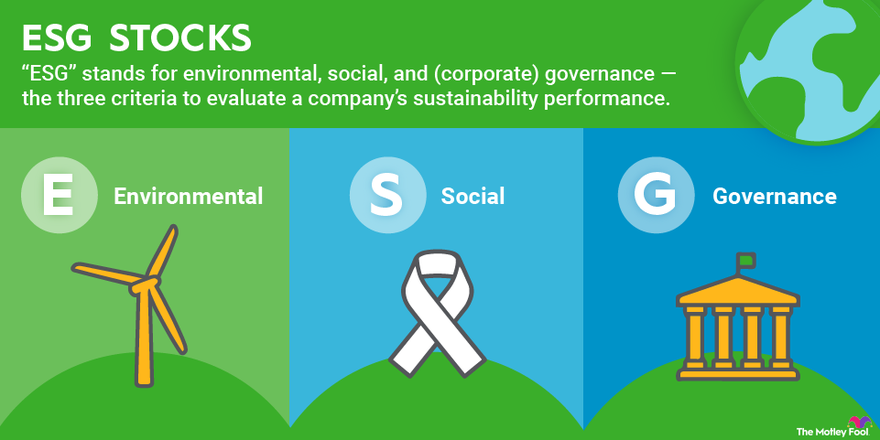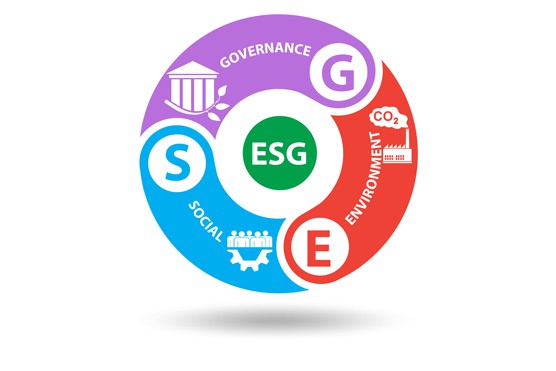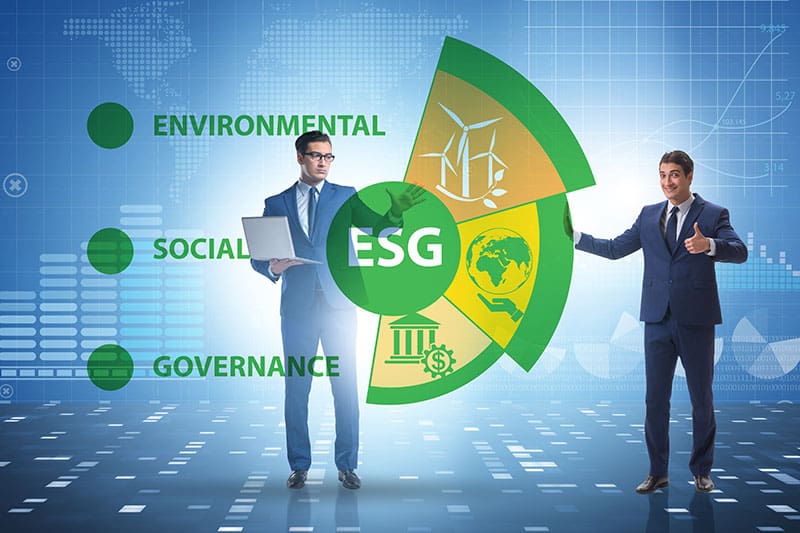Integration of ESG into Traditional Investing isn’t just a buzzword; it’s the edge your portfolio needs. Gone are the days when you’d invest with just profit in mind. Now, it’s about making money while doing good for the planet and society. ESG investing aligns your values with your investment goals, weaving in social, environmental, and governance factors into every financial decision.
Unlock the power to not only grow your wealth but also champion a sustainable future. It’s time to redefine the role of your investments. Are you ready to be on the right side of history? Let’s transform how you think about money and meaning with ESG.
Understanding ESG Investing Principles and Their Role in Modern Portfolios
The Evolution from Traditional Investment to ESG Investing
In the past, making money was all investors cared about. But times have changed. Now, how we make money matters too. This is where ESG comes into play. It stands for Environmental, Social, Governance, and these factors are key in today’s investing world.
People want their money to do good and still grow. That’s why many now mix ESG with their usual money moves. It’s not just about being nice; it makes sense for your wallet, too. This blend is called ESG investing, and it’s getting big. It’s all about looking at companies with a new lens.
For example, a firm might make lots of money. But if they harm the planet, some investors will pass. The same goes for companies with bad working conditions or unfair bosses. No matter the profits, these issues can come back to bite. So, smart investors use ESG to spot these risks early on.
The Materiality of ESG Factors In Long-term Portfolio Performance
You’ve probably heard ‘materiality’ before. In ESG, it’s all about what factors will truly impact a company’s future. It’s like being a money detective, trying to figure out what might hurt or help your cash grow over time.
You might think, “But how do I do that?” Well, you start with ESG metrics. Things like carbon footprints, worker happiness, and how a company is run. These numbers can tell you a lot. They can show you which firms are built to last and which might fall behind.
Also, the world cares about these issues more than ever. That means laws and customer views on them can change. Firms that are ahead in ESG tend to do better when these shifts happen. So, if we care about our investments lasting a long time, we should look closely at ESG.
In fact, many studies show portfolios with ESG do as well or even better than others. And it’s not just a short-term thing. We’re talking about solid gains over many, many years. That’s because smart ESG choices lead to strong, lasting companies. And these are the businesses we all want in our investment mix.
So, let’s say you’re wondering, “Where do I go from here?” First, think about what ESG issues matter to you. Next, find investments that match your values and look set to grow. This is how you make sure your money works for you and the world around you.
Remember, your choices shape the future of investing. You can push for a world where the air is clean and people are treated right. More than that, you help set the stage for a market where doing good is just part of the job. With ESG, you’re not just picking stocks. You’re picking the kind of world you want to live in.
By choosing ESG, you’re investing in a future that values people and the planet just as much as profits. That’s how you revolutionize your portfolio and the world.
Establishing a Framework for ESG Integration in Portfolio Management
Incorporating Sustainability through ESG Screening and Metrics
When we talk about ESG investing, we focus on the planet and people. It’s about putting money into companies that care for the environment, treat people well, and have strong rules to guide them. Let’s break down how to mix ESG with regular money ways.
Firstly, you have to know where each company stands on ESG. That’s like getting to know someone before asking them to join your sports team. ESG metrics are your cheat sheet here. They show you who recycles, who’s fair to workers, and who’s playing by the rules. You use these scores to pick the best players for your team–I mean, for your portfolio.
Next, it’s all about how you apply these scores. You don’t want folks that just talk a good game; you want ones that walk the walk. So you check the data bottoms-up, making sure it’s true, and reflects what the company does for real.
By doing this, you’re putting sustainability in how you handle your cash. It’s like choosing a reusable water bottle over a throwaway one. Every choice adds up and makes a world of difference.
Building and Implementing an Ethical Investment Policy
Now, for an ethical investment policy, you’re setting ground rules for your money game. It’s saying, “Here’s what we stand for,” like a team that won’t take players who don’t play fair. This plan tells you what’s cool and what’s not, so you stay on the right path.
To build this policy, you have to be clear about what you care for. This isn’t just being good; it’s smart too. You’re looking ahead, thinking about how keeping the earth clean, and being good to people is good for business in the long run. And that means more money later, not just now.
Putting this policy in play means sticking to your rules, no matter what. If you say no to bad stuff, then it’s no all the way. It can be tough, sure, but hey, that’s how you show you mean business.
So, you’ve set up your ESG game plan. It’s all about picking stars with good ESG scores and sticking to your play rules. By doing this, you’re taking care of the earth and people. And you’re also looking out for your money’s future. That’s smart and good, all in one shot.
The Nuts and Bolts of ESG Risk Assessment and Compliance
Deploying ESG Due Diligence in Investment Decisions
When you put your money into investments, you want to know they’re good in every way. ESG checks shed light on risks and help keep your cash safe. ESG risk assessment is like looking under the hood before you buy a car. You check every part to make sure it’s all running smooth. In finance, we look at a company’s ESG scores to do the same thing. We ask, “How does this company care for our planet?” We look at how it treats people, both inside the company and in the world. Is it fair and just in its doing business? And we check on the company’s leaders: are they making smart choices for the long run?
These checks help me, as your ESG guide, choose just the right investments for your future. We make sure each one lines up with what’s good for our world and your wallet. ESG numbers, or metrics, are like a map; they guide your investment journey. ESG due diligence isn’t just a one-time thing. It’s an ongoing effort. This means checking up on companies often. It ensures they stay true to their ESG promises.
Aligning Portfolios with ESG Benchmarks and Disclosure Requirements
Now, say you have a basket of investments – we call this a portfolio. It’s a mix of different things like stocks, bonds, and maybe even green projects. You want your basket to match up with ESG rules and score high on things that count. ESG benchmarks are like goalposts. They help keep your investments going in the right direction. ESG investing is not just about choosing the right things once.
It’s about making sure they continue to play by the rules. Green finance isn’t just about money; it’s about building a better future. That’s why we keep an eye on ESG reports from the companies. We make sure they tell us the truth about what they’re doing. ESG compliance for investors means that your investments need to follow the rules, too. It’s my job to know all about these rules and help you play by them.
Every time a company shares how it’s doing with ESG, that’s a disclosure. We love clear and honest ESG disclosure! It helps us trust the companies more. ESG disclosure requirements are the must-dos for companies to tell us about their ESG ways. We look at these reports and check them with our ESG standards to see if everything checks out.
In my work, I take care of your investments so they can take care of you and the Earth. Putting ESG at the heart of where you put your money can lead to wins for everyone. It helps grow your money over time while doing good for people and the planet.
So let’s ensure we’re updating our maps, keeping our basket of goods aligned, and scoring goals with ESG benchmarks. After all, doing our homework on investments can lead to a brighter, greener future.
And that’s what ESG risk assessment and compliance are all about: making money and making a difference, hand in hand.
Strategic Approaches to ESG Investments and Measuring Impact
Green Finance Initiatives and Performance of ESG-Integrated Portfolios
Green finance is changing how we think about money and our planet. It puts the Earth first in our investment strategies. By focusing on green finance, you can make your portfolio grow while also helping to keep our world clean and safe. When you put money into companies that care about the environment, you often see solid returns on your investment. This is because companies that look after the planet tend to do well over time.
Investors are noticing that doing good for the world can also be good for their wallets. We see more people putting their money into these kinds of investments each year. They’re looking at how companies work with the Earth in mind. They ask questions like, “Does this company use clean energy?” or “Are they cutting waste?” They also check if companies treat their workers fairly. All these actions can help the planet and make investors money.
Investor Engagement and the Role of Climate Change in Asset Allocation Strategy
Talking to companies about climate change is key. As an investor, you have the power to push companies to be better for the planet. You can ask them to explain how they are dealing with climate change. When lots of us do this, companies listen. They start to change things, like how they make products, to hurt our planet less.
Climate change affects what our investment future looks like. We have to think about how hot the Earth is getting when we decide where to put our money. For example, some places might see more storms or get very hot. Crops might not grow as well. This means that companies that rely on these crops could be in trouble.
Investors use climate data to pick companies that can handle these climate changes. They put money into technology that fights climate change or helps us deal with it. If a company is working on a new way to make energy without polluting, that could be a smart pick. The goal is to have a mix of investments that can grow even as the world’s climate changes.
All investors should think about ESG. It helps the Earth and can also help their money grow. As you learn about green finance and climate change, you can make better choices for your investments. When we all do this, we build a future that’s safe for the planet and good for our bank accounts.
In this post, we dived into ESG investing, a major shift in managing money. We saw how traditional investing has evolved to include ESG factors which matter in how portfolios perform over time. Next, we explored how to weave ESG into your investment strategy, from picking stocks with care to making policies that reflect ethical values.
We didn’t stop there. We checked out tools for measuring ESG risks and the rules that guide us in keeping our investments in line. Last, we looked at how to put money into ESG and really make an impact, and why climate change should shape where we invest.
To wrap up, ESG isn’t just a trend, it’s a smart way to invest for the future. By picking stocks with ESG in mind, setting up good policies, and keeping risks low, we’re not just making money – we’re making a difference. Remember, it’s your money and your world. Invest wisely, and we can help both thrive.
Q&A :
What is ESG and how is it integrated into traditional investing?
ESG stands for Environmental, Social, and Governance, which are three key criteria used to measure the sustainability and ethical impact of an investment in a company or business. The integration of ESG into traditional investing involves actively considering these aspects when making investment decisions, beyond just looking at financial returns. This can mean investing in companies that demonstrate ethical practices, show environmental responsibility, and have transparent and effective governance structures.
Why are investors increasingly prioritizing ESG in their portfolios?
Investors are increasingly prioritizing ESG factors in their portfolios for several reasons. Firstly, there’s a growing recognition that ESG issues can significantly influence risk and return profiles. Environmental challenges like climate change, social issues such as labor practices, and governance matters like corporate ethics can affect a company’s performance and thus an investment’s profitability. Secondly, investors are also driven by the desire to make a positive impact on society and the environment. Lastly, regulatory pressure and societal expectations are driving the demand for more sustainable investment practices.
How does ESG integration affect financial performance?
The effect of ESG integration on financial performance is a topic of ongoing research and debate. However, numerous studies suggest that companies with strong ESG practices may outperform those with poor ESG records in the long term. By addressing ESG issues, companies can potentially reduce costs, mitigate risks, and tap into new opportunities, all of which can contribute to better financial performance. Additionally, ESG integration may also attract socially conscious investors, which can influence a company’s share price positively.
Can ESG integration reduce investment risks?
Yes, integrating ESG criteria can potentially reduce investment risks. By closely evaluating the ESG practices of companies, investors can identify potential risks and challenges that may not be apparent through traditional financial analysis alone. For instance, poor environmental practices can lead to regulatory fines, reputational damage, or operational disruptions, while strong governance can prevent scandals and mismanagement that may negatively impact a company’s stock. Therefore, ESG integration serves as an additional layer of risk management to traditional investing.
What challenges might investors face when integrating ESG into traditional investment strategies?
Investors looking to integrate ESG into their traditional investment strategies might face several challenges. Firstly, there may be a lack of standardized ESG metrics and reporting, making comparisons between companies difficult. Secondly, integrating ESG criteria into investment analysis might require additional resources and expertise that not all investors possess. Thirdly, there can be short-term trade-offs between ESG integration and financial performance, particularly if an investor divests from profitable companies with poor ESG records. Finally, investors may encounter resistance from traditional investment stakeholders who are skeptical of the material impact of ESG factors on financial returns.


